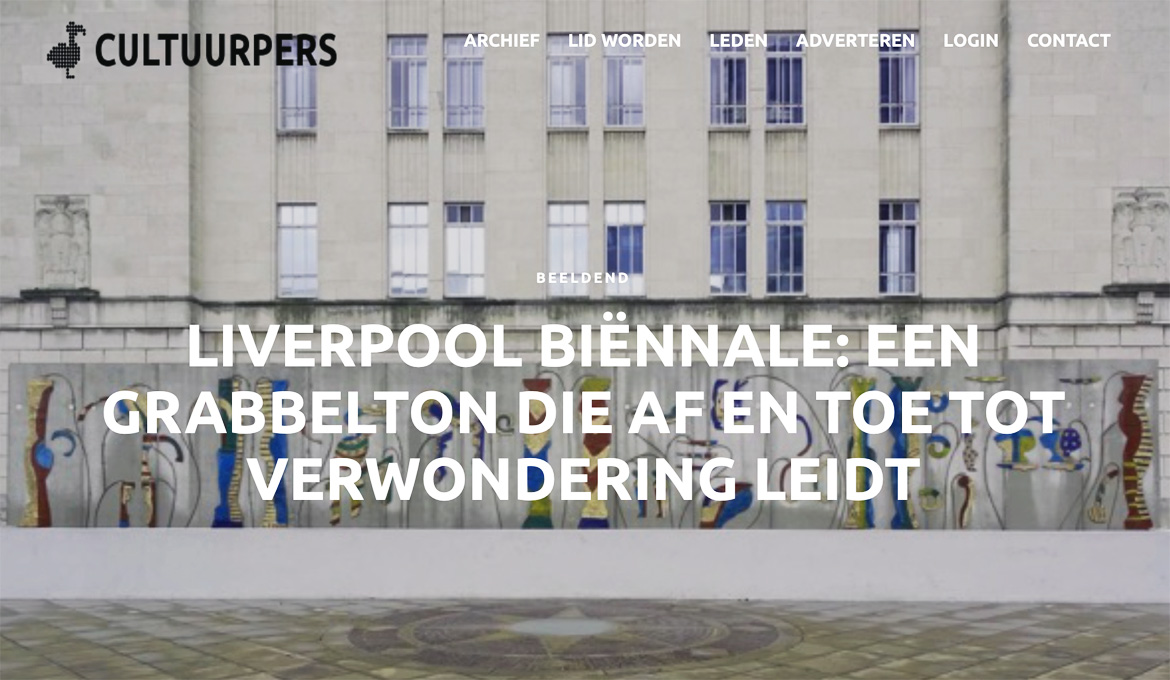Liverpool Biennale Reviewed
“A grab bag which occasionally leads to a surprise.”
“Things happen, and then they happen again, but not the same way, not quite; such is the logic of the biennial. And then there are things which have never happened before, and which happen now and in a time that seems somehow out of time, or takes our “now” out with it.”
This wrote Jeremy Millar¹ in his review about the Liverpool Biennial 2016. I thought it was a beautiful formulation, and therefore I quote him happy here. As “European” visitor I noticed, like Millar, that everything in this very international art event still trembled of the Brexit vote. All official speeches at the opening, just two weeks after the referendum gave some attention to it, not without emphasizing that the people of Liverpool (about 465 500 inhabitants.) had voted by about 58.2% to remain.
While it is still unclear what will happen to the outcome of the consultative referendum, it also affects the look with which I look to Liverpool itself and at this Biennale.
Destruction
Before me, I see a splintering world. Despite the millions Euro’s support from the European Community for redevelopment of this city, I still see an ugly, scarred city. A city that seems still not has overcome the ‘kaltstellung’ by Margaret Thatcher for his rebellious role against her policies. A city on which the German Luftwaffe has conducted a total of 80 bombings during World War II, making 50% of the city destroyed and some 2,500 people killed. That has so deeply intervened in the structure of the city that it still appears to be torn. The current architecture is a very hard confrontation between what once was and what is to come of it. Seemingly without any sense of direction.
Slave trade
In the early 18th century forty percent of world trade was brought in through the port of Liverpool. Liverpudlian owners were between 1740 and 1840 may be responsible for 80% of the slave trade carried out by the British. That made the owners of Liverpool among the major players of the transatlantic slave trade.
Of all illnesses and plagues, Liverpool must have been well endowed…
Website Liverpool Biennale
Read the whole review in Dutch here on Cultuurpers
- Jeremy Millar is an artist living in London, and tutor on the Critical Writing in Art and Design program at the Royal College of Art, London.
All images are under copyright © VanGerven|VanRijnberk
